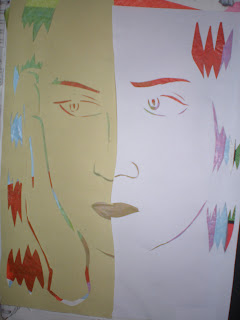Images from the Leandro Senna website.
These are typographic hand letterings drawn by Leandro Senna. These are part of the lyrics from Bob Dylan's Subterranean Homesick Blues, which he was inspired by, where there the musician himself holds up cards containing the lyrics of his song, so Senna wanted re-create this with his own hand lettering. These are two of sixty-six cards which were completed within a month. I have chosen to analyse his work, because I would like to use some text in his style.
From the video on his website, it seems like his medium was that of markers and fine liners, to achieve a variety of lines. The lettering ranges from simple to complex, but not too complex, so that the viewer can easily read it, which I like. He uses a range of lines, including the directional lines seen in the second picture, which have a geometric appearance. The one above however, is not as complex but it is still effective. In regards the process itself, the artist drew out the lettering in pencil first, so that mistakes can be erased, and when satisfied with the design, draws over it using a black fine liner or marker. Another noticeable trait is how the text is centre-aligned, and the attention has gone into the text, and not the background, which has effectively been left plain. If the background was decorated, along with the decorated text, would have been too overwhelming for the viewer to take in. The scale of the paper he used looks to approximately A3 size.
As mentioned before, the inspiration came from Bob Dylan song Subterranean Homesick Blues. Senna himself seems like quite the perfectionist, as "getting a letter wrong meant starting the page over". He also says that he "had a lot of fun doing this project", which stresses that it's important to enjoy the work, so that you will do it to the best of your ability.
I really like his work for it's simplistic and complex range, something that I feel was missing from the other artists that I have analysed. But then again, working with text allows you to do this and he is the only artist that I have looked at whose main exploration was that of text.

















